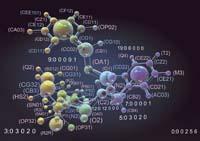How to sew the gene, the key to being a protein or another

Previously it was thought that each gene provided a protein (a gene, a protein). However, now, different research has shown that the same gene can provide more than one protein. One of these investigations has been conducted at MIT, Wang E.T. the researcher and his teams. The genes have been studied in depth in 15 different human tissues, and they have seen that the same gene, whether from a cell of one tissue or another tissue, provides proteins of different functions.
The key is how the gene is sewn. In fact, there are very few genes made from linear fragments of DNA, most are produced by the union of parts located in different places of DNA, the messenger RNA being in charge of sewing the parts. This messenger RNA can be used as a protein creation template.
It has now been shown that a single gene can be carried in different ways, for example, sometimes part of it can be excluded. This process is called an optional association, and each form of sewing or associating the gene gives a certain protein.
Other researchers have also seen the same thing. For this purpose they have used the technique devised by the biotechnology company Illumina, which consists in transforming the messenger RNA into DNA through an enzyme, analyzing its sequence. Examples of optional association have been found in six tissues, including the brain, liver, and lungs.
According to the researchers, this process occurs in 94% of humans, while in the worm C. elegans only occurs in 10% of genes. Apparently, this explains why humans are more complex than worms, although both have a similar number of genes.





